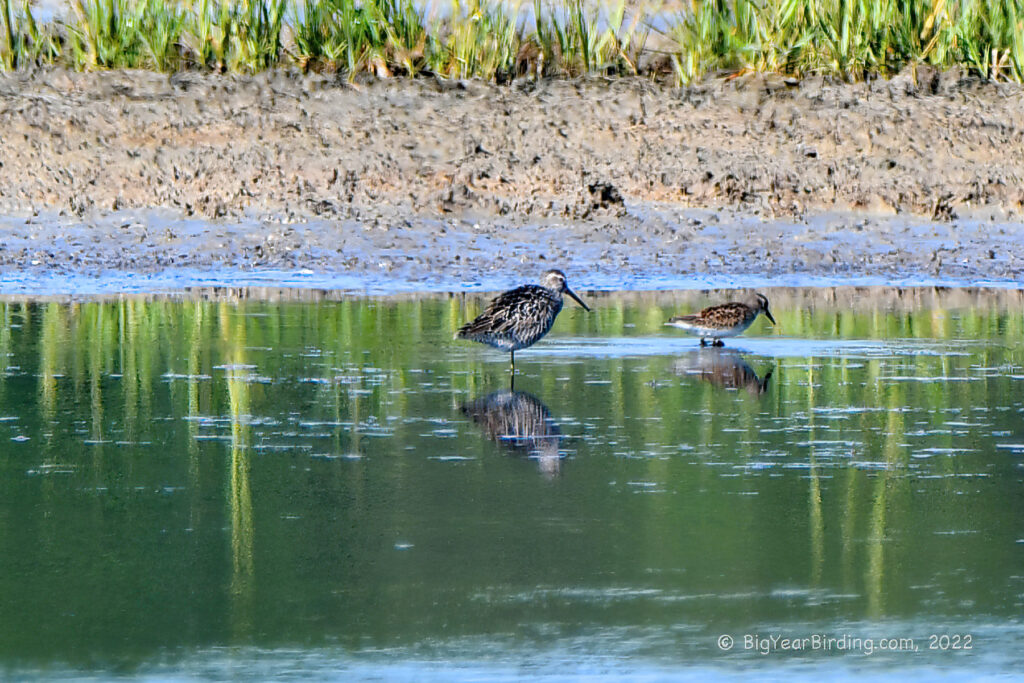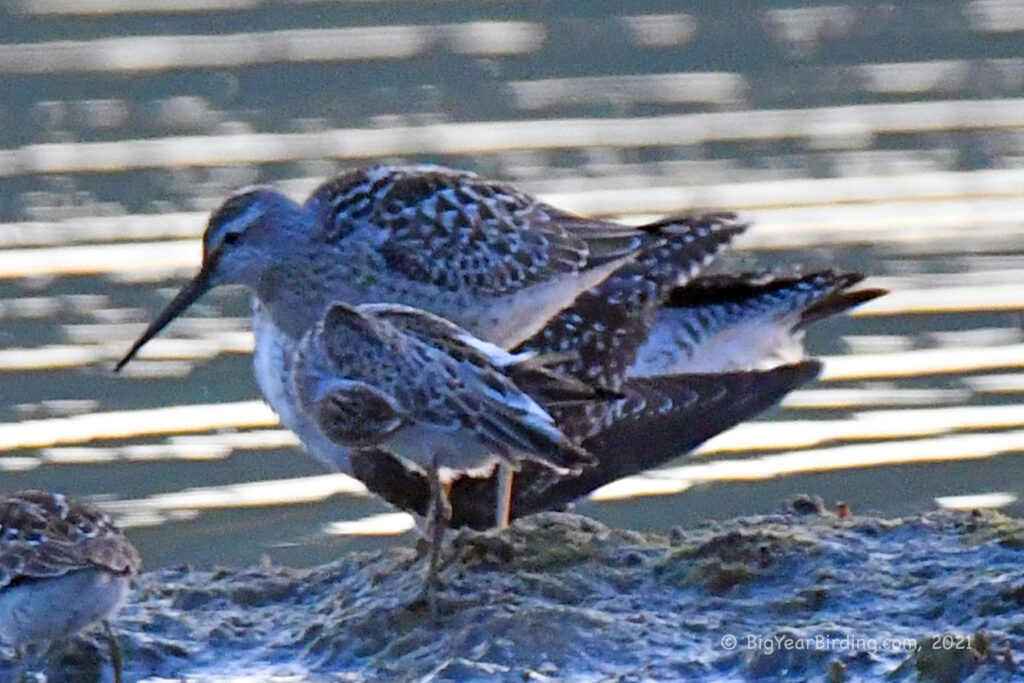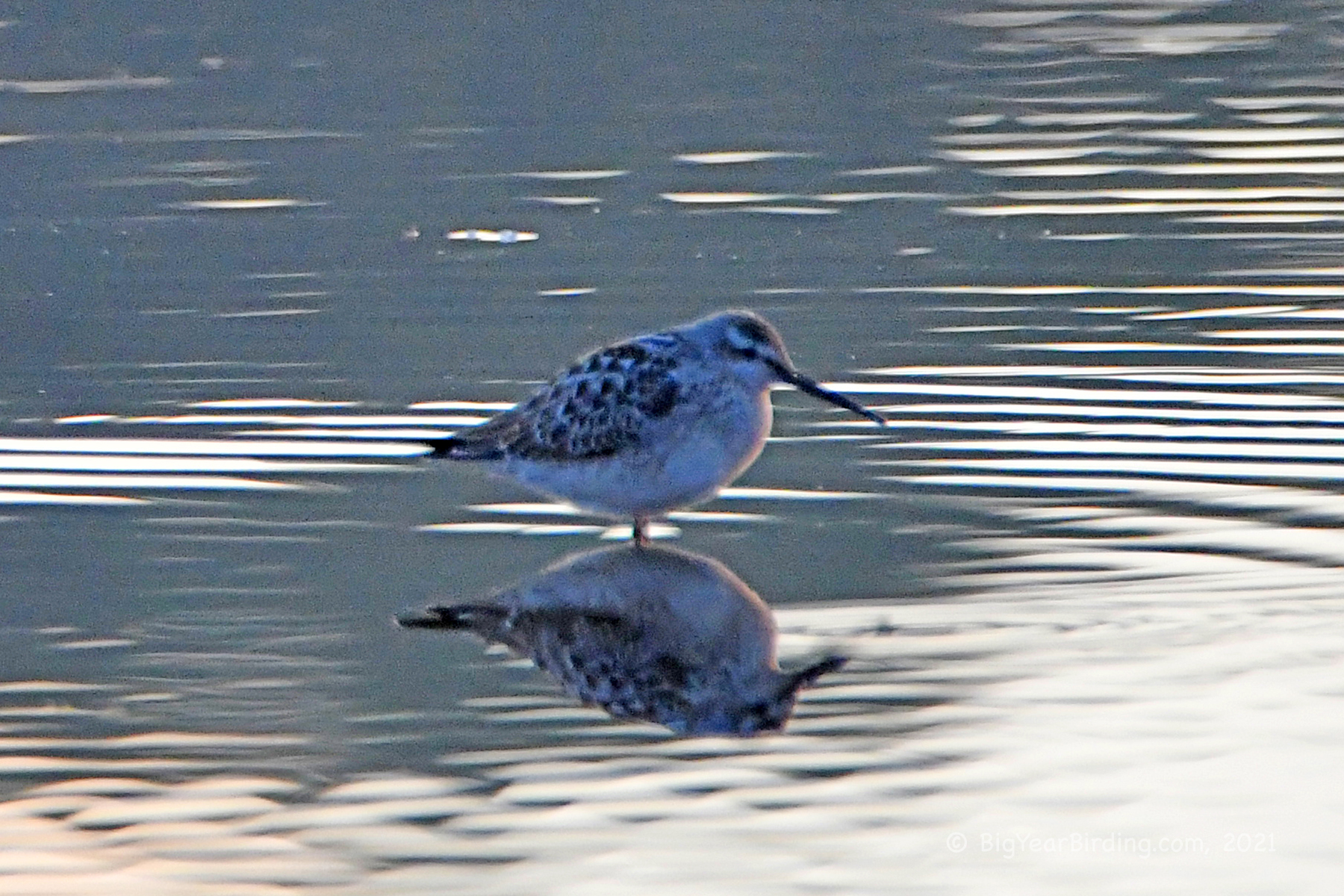The Stilt Sandpiper (Calidris himantopus) is a medium-sized shorebird found in North America. Adults measure between 7.5 to 8.7 inches (19-22 cm) in length, have a wingspan of 18.5 to 20.1 inches (47-51 cm), and weigh between 1.6 to 2.2 ounces (45-62 g). They have long, thin legs that give them their name, and a straight, thin bill that curves slightly downward. They also have a distinctive white eyebrow stripe that contrasts with their dark crown and eyeline, and a heavily barred breast and flanks.

Stilt Sandpipers breed in the Arctic tundra of Alaska and northern Canada and migrate south to spend their winters in South America, often along the coasts of Peru, Ecuador, and Brazil. During migration, they can be found in wetlands, mudflats, and flooded fields across the United States and Central America, where they feed on small invertebrates such as insects and crustaceans.
One of the distinguishing features of the Stilt Sandpiper is its distinctive feeding behavior. They use their long legs to wade through shallow water, probing the mud with their bills to find prey. They are often seen in flocks, and their foraging behavior creates a distinctive side-to-side motion that sets them apart from other shorebirds.
The Stilt Sandpiper is a highly migratory bird, with individuals traveling thousands of miles each year to breed and winter. They face a number of threats throughout their range, including habitat loss and degradation, pollution, and climate change. Conservation efforts are underway to protect their breeding and wintering grounds, as well as important stopover sites along their migration routes.

In summary, the Stilt Sandpiper is a medium-sized shorebird with long, thin legs and a distinctive white eyebrow stripe. They breed in the Arctic and migrate south to spend their winters in South America, often stopping over in wetlands and mudflats across North America. Their feeding behavior and migratory patterns make them a fascinating species to observe, but also vulnerable to a range of threats.

